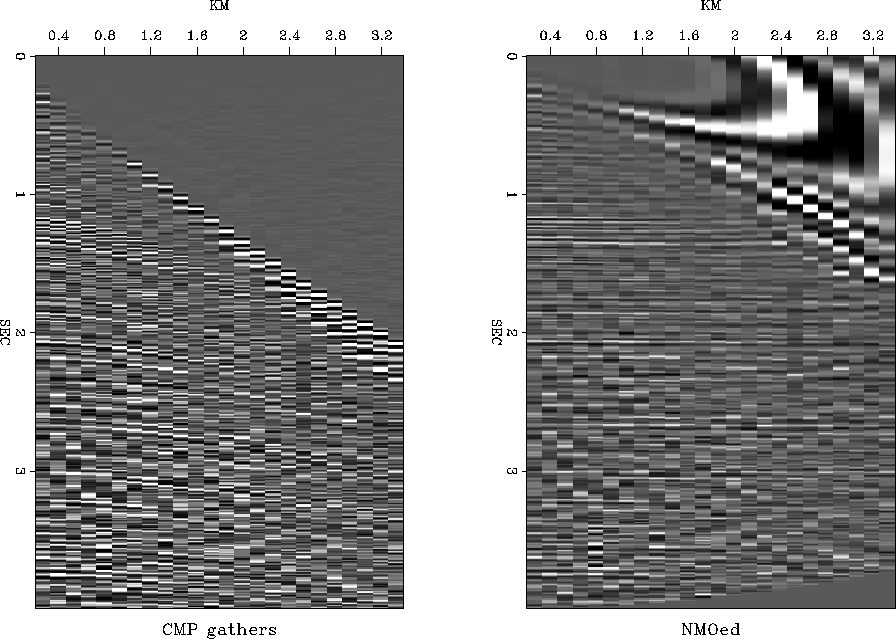Normal moveout correction (NMO) is a stretching of the time axis
to make all seismograms look like zero-offset seismograms.
In its simplest form, NMO is based on the Pythagorean
relation ![]()
![]() .In a constant velocity earth,
the NMO correction would take the asymptote of the hyperbola family
and move it up to
.In a constant velocity earth,
the NMO correction would take the asymptote of the hyperbola family
and move it up to ![]() .This abandons anything on the time axis before the first arrival,
and stretches the remainder of the seismogram.
The stretching is most severe near the first arrival,
and diminishes at later times.
In the NMO example in Figure 1 you will notice
the low frequencies caused by the stretch.
.This abandons anything on the time axis before the first arrival,
and stretches the remainder of the seismogram.
The stretching is most severe near the first arrival,
and diminishes at later times.
In the NMO example in Figure 1 you will notice
the low frequencies caused by the stretch.
 |
NMO correction may be done to common-shot field profiles or to CMP gathers. NMO applied to a field profile makes it resemble a small portion of a zero-offset section. Then geologic structure is prominently exhibited. NMO on a CMP gather is the principal means of determining the earth's velocity-depth function. This is because CMP gathers are insensitive to earth dip.
Mathematically, the NMO transformation is a linear operation. It may seem paradoxical that a non-uniform axis-stretching operation is a linear operation, but axis stretching does satisfy the mathematical conditions of linearity. Do not confuse the widespread linearity condition with the less common condition of time invariance. Linearity requires only that for any decomposition of the original data P into parts (say P1 and P2) the sum of the NMOed parts is equal the NMO of the sum. Examples of decompositions include: (1) separation into early times and late times, (2) separation into even and odd time points, (3) separation into high frequencies and low frequencies, and (4) separation into big signal values and small ones.
To envision NMO as a linear operator, think of a seismogram as a vector. The NMO operator resembles a diagonal matrix, but the matrix contains interpolation filters along its diagonal, and the interpolation filters are shifted off from the diagonal to create the desired time delay.